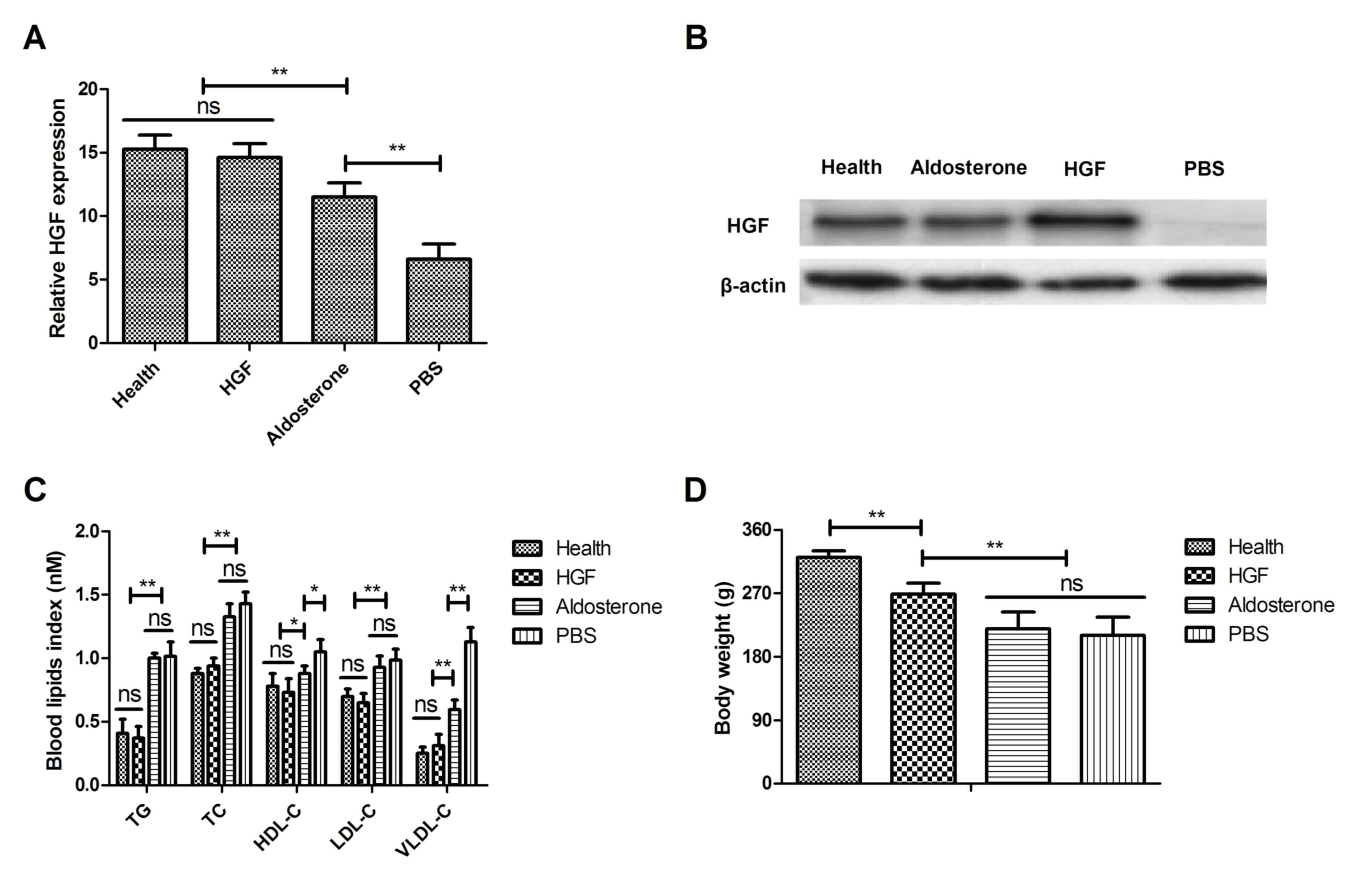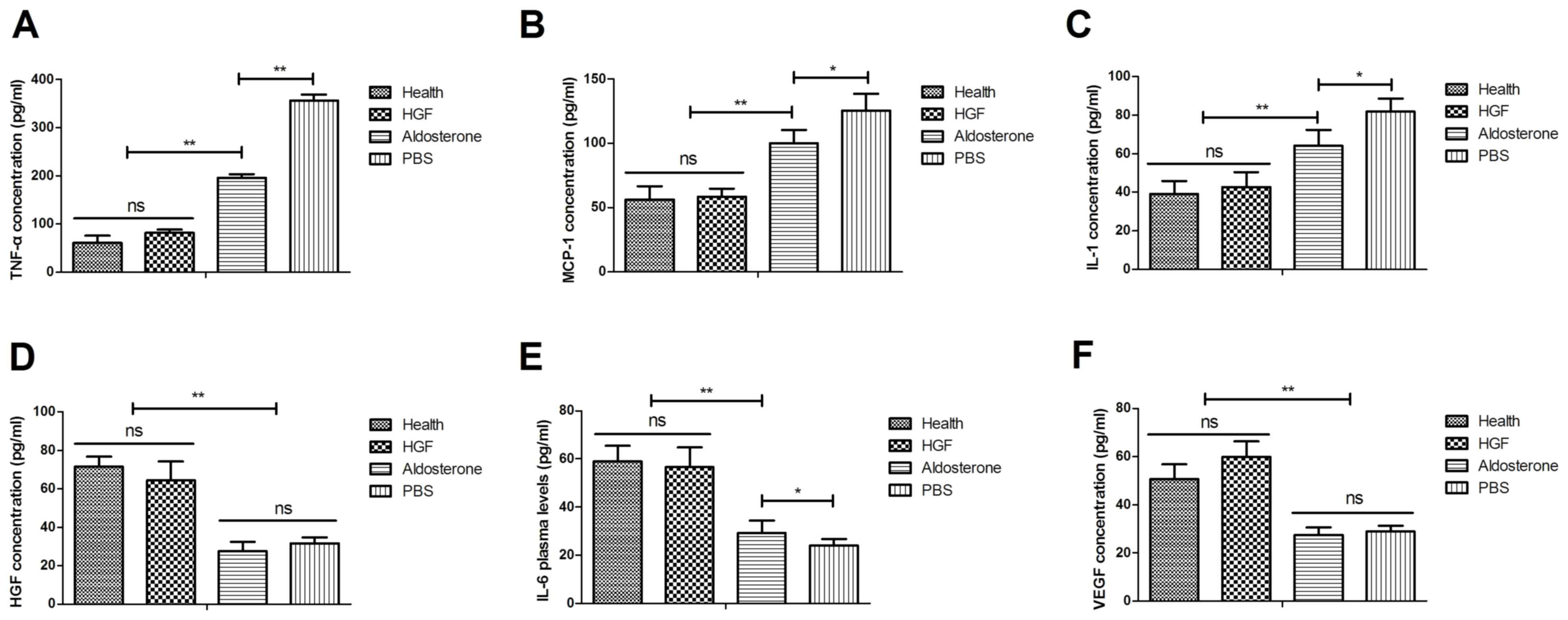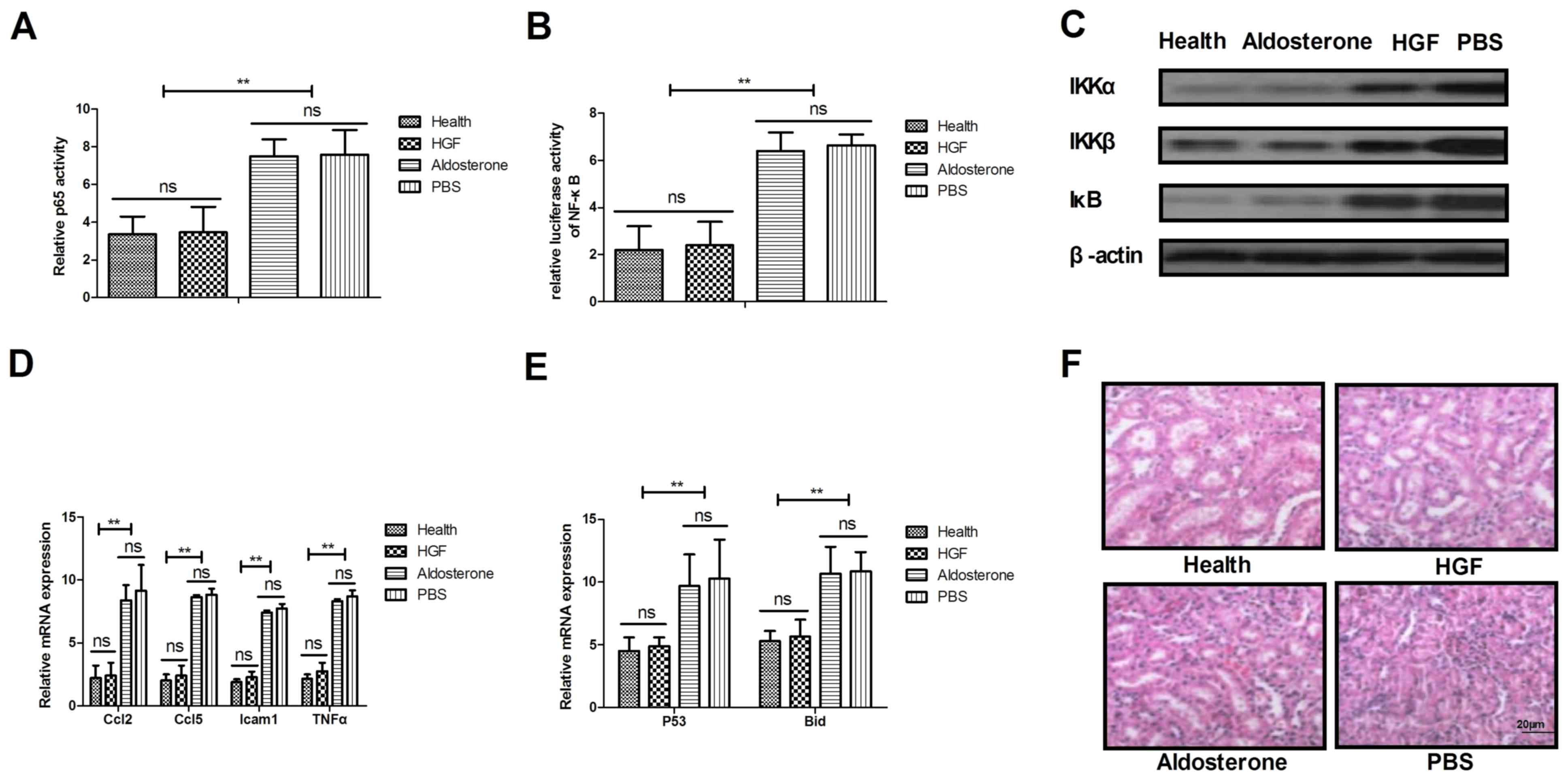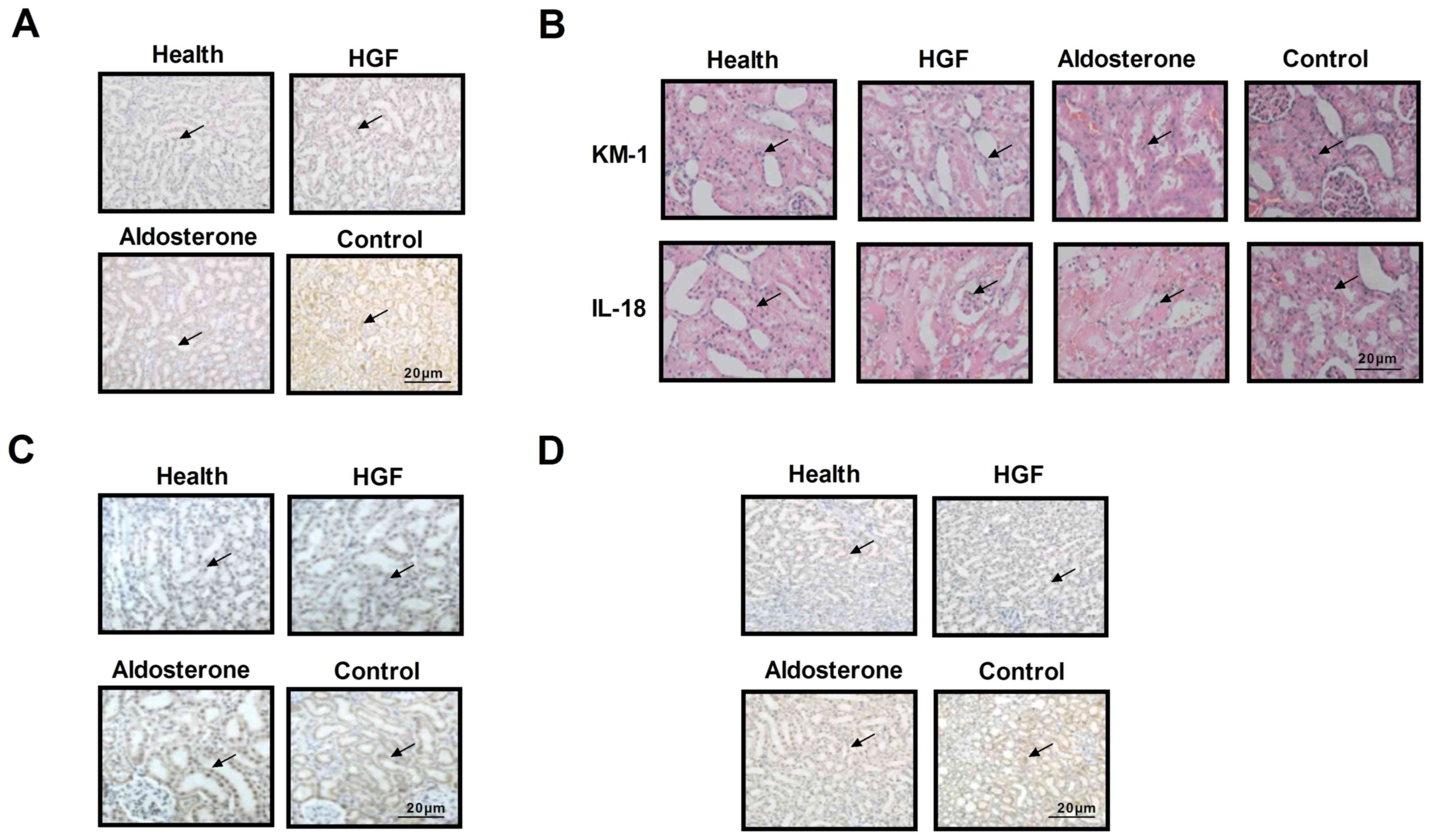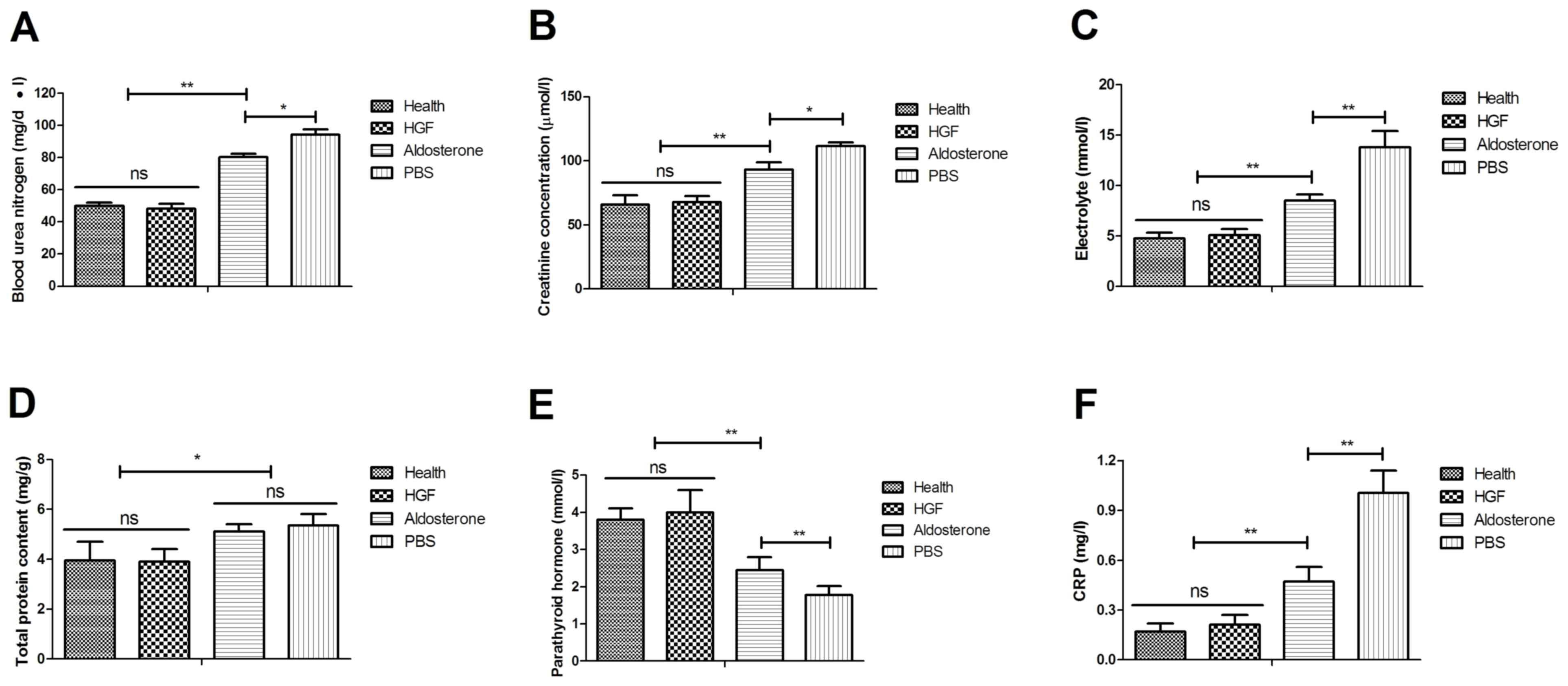|
1
|
Finlay E: Review: Most interventions for
preventing bone disease in chronic renal failure improved
biochemical outcomes. Arch Dis Child Educ Pract Ed. 97:402012.
View Article : Google Scholar : PubMed/NCBI
|
|
2
|
Takase H, Nakazawa A, Yamashita S,
Toriyama T, Sato K, Ueda R and Dohi Y: Pioglitazone produces rapid
and persistent reduction of vascular inflammation in patients with
hypertension and type 2 diabetes mellitus who are receiving
angiotensin II receptor blockers. Metabolism. 56:559–564. 2007.
View Article : Google Scholar : PubMed/NCBI
|
|
3
|
Varughese GI and Lip GY: Hypertension in
patients with type-II diabetes: Relation to urinary albumin
excretion, endothelial function and inflammation. J Hum Hypertens.
19:421–424. 2005. View Article : Google Scholar : PubMed/NCBI
|
|
4
|
Yamamoto S, Okada Y, Mori H, Nishida K,
Uriu K and Tanaka Y: Type 2 diabetes mellitus complicated by
hypertension in Japanese patients: Switching treatment from
high-dose angiotensin II receptor blockers to losartan plus
hydrochlorothiazide. Intern Med. 53:1283–1289. 2014. View Article : Google Scholar : PubMed/NCBI
|
|
5
|
Kalaitzidis R and Bakris G: Management of
hypertension in patients with diabetes: The place of angiotensin-II
receptor blockers. Diabetes Obes Metab. 11:757–769. 2009.
View Article : Google Scholar : PubMed/NCBI
|
|
6
|
Hasvold LP, Bodegård J, Thuresson M,
Stålhammar J, Hammar N, Sundström J, Russell D and Kjeldsen SE:
Diabetes and CVD risk during angiotensin-converting enzyme
inhibitor or angiotensin II receptor blocker treatment in
hypertension: A study of 15,990 patients. J Hum Hypertens.
28:663–669. 2014. View Article : Google Scholar : PubMed/NCBI
|
|
7
|
Daimon M, Kamba A, Murakami H, Takahashi
K, Otaka H, Makita K, Yanagimachi M, Terui K, Kageyama K, Nigawara
T, et al: Association between pituitary-adrenal axis dominance over
the renin-angiotensin-aldosterone system and hypertension. J Clin
Endocrinol Metab. 101:889–897. 2016. View Article : Google Scholar : PubMed/NCBI
|
|
8
|
Ficek J, Malyszko J and Chudek J: Renalase
and its role in the development of hypertension in patients with
chronic renal failure. Przegl Lek. 72:306–308. 2015.(In Chinese).
PubMed/NCBI
|
|
9
|
Kasacka I: Review article-involvement of
gastric APUD cells in chronic renal failure. Acta Histochem.
105:319–327. 2003. View Article : Google Scholar : PubMed/NCBI
|
|
10
|
Bos-Touwen I, Schuurmans M, Monninkhof EM,
Korpershoek Y, Spruit-Bentvelzen L, Ertugrul-van der Graaf I, de
Wit N and Trappenburg J: Patient and disease characteristics
associated with activation for self-management in patients with
diabetes, chronic obstructive pulmonary disease, chronic heart
failure and chronic renal disease: A cross-sectional survey study.
PLoS One. 10:e01264002015. View Article : Google Scholar : PubMed/NCBI
|
|
11
|
Nair PA, Jivani NB and Diwan NG: Kyrle's
disease in a patient of diabetes mellitus and chronic renal failure
on dialysis. J Family Med Prim Care. 4:284–286. 2015. View Article : Google Scholar : PubMed/NCBI
|
|
12
|
Guntani A, Yamaoka T, Okadome J, Kawakubo
E, Kyuragi R, Homma K, Iwasa K, Matsumoto T, Okazaki J and Maehara
Y: Evaluation of the paramalleolar bypass for critical limb
ischemia patients on hemodialysis with diabetes mellitus and
chronic renal failure. Ann Vasc Dis. 6:596–600. 2013. View Article : Google Scholar : PubMed/NCBI
|
|
13
|
Guerra-Martin MD, Amador-Marin B and
Martinez-Montil JM: Health problems of family caregivers of people
over 65 suffering from chronic renal failure: A systematic review.
An Sist Sanit Navar. 38:425–438. 2015.(In Chinese). PubMed/NCBI
|
|
14
|
Ramezani A, Nägga K, Hansson O, Lönn J,
Sjöwall J, Katoozian F, Mansouri S and Nayeri F: Hepatocyte growth
factor in cerebrospinal fluid differentiates community-acquired or
nosocomial septic meningitis from other causes of pleocytosis.
Fluids Barriers CNS. 12:222015. View Article : Google Scholar : PubMed/NCBI
|
|
15
|
Faletto DL, Kaplan DR, Halverson DO, Rosen
EM and Vande Woude GF: Signal transduction in c-met mediated
motogenesis. EXS. 65:107–130. 1993.PubMed/NCBI
|
|
16
|
Baum E, Pawlaczyk K, Maćkowiak B, Sosinska
P, Matecka M, Kolodziejczak B, Musielak M and Breborowicz A: Levels
of hepatocyte growth factor in serum correlate with quality of life
in hemodialysis patients. Int J Clin Exp Pathol. 8:13477–13482.
2015.PubMed/NCBI
|
|
17
|
Mizuno S and Nakamura T: Molecular basis
for HGF-mediated regression of renal fibrosis. Nihon Rinsho. 64
Suppl 2:S312–S321. 2006.(In Chinese).
|
|
18
|
Zhang SH, Wen KM, Wu W, Li WY and Zhao JN:
Efficacy of HGF carried by ultrasound microbubble-cationic
nano-liposomes complex for treating hepatic fibrosis in a bile duct
ligation rat model, and its relationship with the
diffusion-weighted MRI parameters. Clin Res Hepatol Gastroenterol.
37:602–607. 2013. View Article : Google Scholar : PubMed/NCBI
|
|
19
|
Hasmim M, Bruno S, Azzi S, Gallerne C,
Michel JG, Chiabotto G, Lecoz V, Romei C, Spaggiari GM, Pezzolo A,
et al: Isolation and characterization of renal cancer stem cells
from patient-derived xenografts. Oncotarget. 7:15507–15524. 2016.
View Article : Google Scholar : PubMed/NCBI
|
|
20
|
Friedewald WT, Levy RI and Fredrickson DS:
Estimation of the concentration of low-density lipoprotein
cholesterol in plasma, without use of the preparative
ultracentrifuge. Clin Chem. 18:499–502. 1972.PubMed/NCBI
|
|
21
|
Livak KJ and Schmittgen TD: Analysis of
relative gene expression data using real-time quantitative PCR and
the 2(-Delta Delta C(T)) method. Methods. 25:402–408. 2001.
View Article : Google Scholar : PubMed/NCBI
|
|
22
|
Li M, Shi X, Chen F and Hao F: Daphnetin
inhibits inflammation in the NZB/W F1 systemic lupus erythematosus
murine model via inhibition of NF-κB activity. Exp Ther Med.
13:455–460. 2017. View Article : Google Scholar : PubMed/NCBI
|
|
23
|
Naganuma Y, Ichii O, Otsuka S, Hashimoto Y
and Kon Y: Analysis of TdT-mediated dUTP nick end labeling
(TUNEL)-positive cells associated with cardiac myogenesis in mouse
embryo. J Vet Med Sci. 75:283–290. 2013. View Article : Google Scholar : PubMed/NCBI
|
|
24
|
Mallavia B, Recio C, Oguiza A, Ortiz-Muñoz
G, Lazaro I, Lopez-Parra V, Lopez-Franco O, Schindler S, Depping R,
Egido J and Gomez-Guerrero C: Peptide inhibitor of NF-κB
translocation ameliorates experimental atherosclerosis. Am J
Pathol. 182:1910–1921. 2013. View Article : Google Scholar : PubMed/NCBI
|
|
25
|
Akyüz A, Yıldız A, Akıl MA, Bilik MZ, İnci
Ü, Kayan F, Yıldız İ, Yılmaz Z, Yıldırım Y and Ülgen MS: Assessment
of right ventricular systolic function in patients with chronic
renal failure before and after hemodialysis by means of various
echocardiographic modalities. Turk Kardiyol Dern Ars. 42:717–725.
2014.(In Chinese). View Article : Google Scholar : PubMed/NCBI
|
|
26
|
Ma HB, Wang R, Yu KZ and Yu C: Dynamic
changes of early-stage aortic lipid deposition in chronic renal
failure rats and effects of decorin gene therapy. Exp Ther Med.
9:591–597. 2015. View Article : Google Scholar : PubMed/NCBI
|
|
27
|
Vahedi M, Malekzadeh H, Haybar H,
Soltanian AR, Abdollahzadeh S, Yoosefi H, Seyedian M, Yazdanpanah
L, Saeid A, Fooladi Shabanpour M and Ghasemi M: The relationship
between salivary beta-2 microglobulin and uremia intensity in men
with chronic renal failure. Cell J. 14:276–281. 2013.PubMed/NCBI
|
|
28
|
Silverberg D, Yalon T, Rimon U, Reinitz
ER, Yakubovitch D, Schneiderman J and Halak M: Endovascular
treatment of lower extremity ischemia in chronic renal failure
patients on dialysis: Early and intermediate term results. Isr Med
Assoc J. 15:734–738. 2013.PubMed/NCBI
|
|
29
|
Berry PA and Thomson SJ: Comment on
O'Brien et al: Prevalence and outcome of cirrhosis patients
admitted to UK intensive care: A comparison against
dialysis-dependent chronic renal failure patients. Intensive Care
Med. 38:1729author reply 1730. 2012. View Article : Google Scholar : PubMed/NCBI
|
|
30
|
Marcondes JA, Martins TC, Amaral AS and
Nery M: Falsely elevated testosterone in a type 1 diabetes patients
with acne and chronic renal failure on dialysis. Arq Bras
Endocrinol Metabol. 56:319–323. 2012.(In Chinese). View Article : Google Scholar : PubMed/NCBI
|
|
31
|
Finegood DT: Obesity, inflammation and
type II diabetes. Int J Obes Relat Metab Disord. 27 Suppl 3:S4–S5.
2003. View Article : Google Scholar : PubMed/NCBI
|
|
32
|
Temelkova-Kurktschiev T, Henkel E, Koehler
C, Karrei K and Hanefeld M: Subclinical inflammation in newly
detected Type II diabetes and impaired glucose tolerance.
Diabetologia. 45:1512002.PubMed/NCBI
|
|
33
|
Bitar MS, Ayed AK, Abdel-Halim SM,
Isenovic ER and Al-Mulla F: Inflammation and apoptosis in aortic
tissues of aged type II diabetes: Amelioration with alpha-lipoic
acid through phosphatidylinositol 3-kinase/Akt- dependent
mechanism. Life Sci. 86:844–853. 2010. View Article : Google Scholar : PubMed/NCBI
|
|
34
|
Mariappan N, Elks CM, Sriramula S,
Guggilam A, Liu Z, Borkhsenious O and Francis J: NF-kappaB-induced
oxidative stress contributes to mitochondrial and cardiac
dysfunction in type II diabetes. Cardiovasc Res. 85:473–483. 2010.
View Article : Google Scholar : PubMed/NCBI
|
|
35
|
Shaarawy M, Fathy SA, Mehany NL and Hindy
OW: Circulating levels of osteoprotegerin and receptor activator of
NF-kappaB ligand in patients with chronic renal failure. Clin Chem
Lab Med. 45:1498–1503. 2007. View Article : Google Scholar : PubMed/NCBI
|
|
36
|
Shalini B and Sharma JD: Beneficial
effects of emblica officinalis on fluoride-induced toxicity
on brain biochemical indexes and learning-memory in rats. Toxicol
Int. 22:35–39. 2015. View Article : Google Scholar : PubMed/NCBI
|
|
37
|
Cizmeci D and Arkun Y: Regulatory networks
and complex interactions between the insulin and angiotensin II
signalling systems: Models and implications for hypertension and
diabetes. PLoS One. 8:e836402013. View Article : Google Scholar : PubMed/NCBI
|















